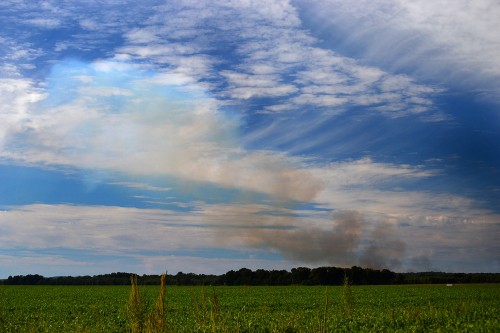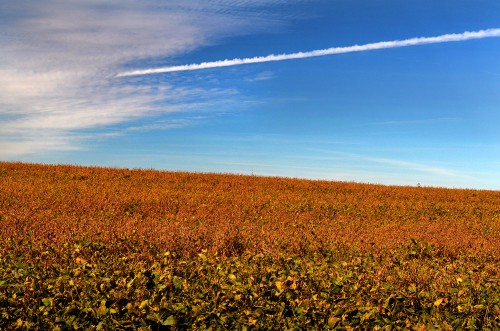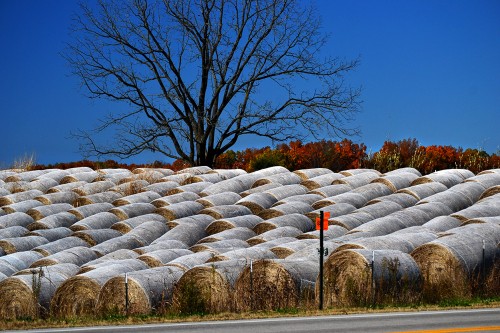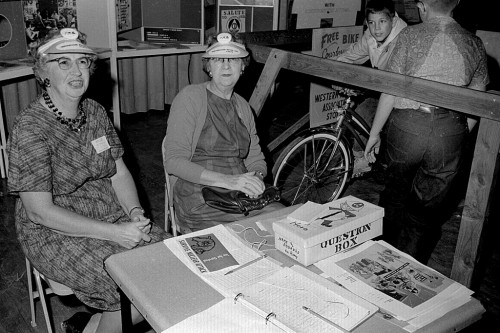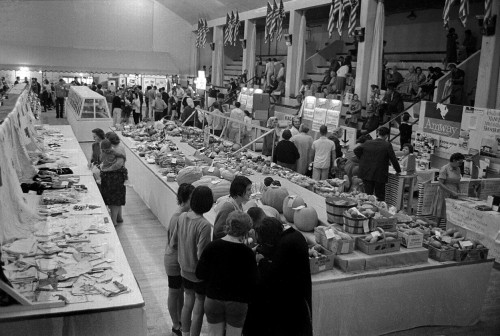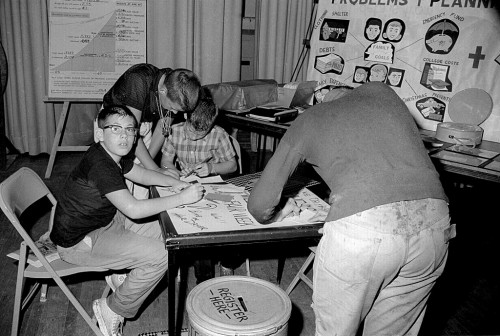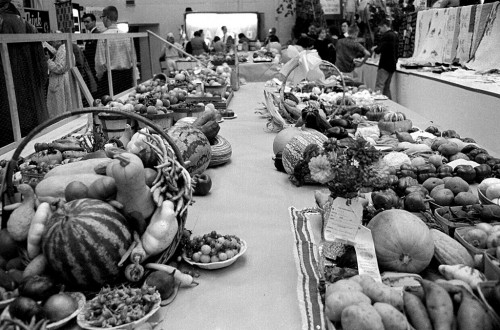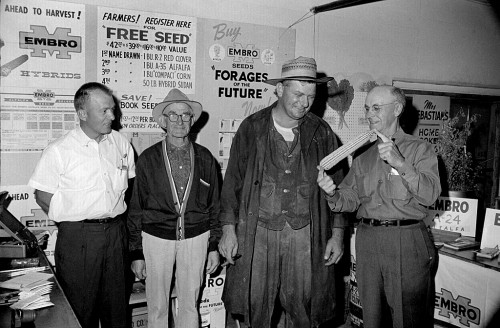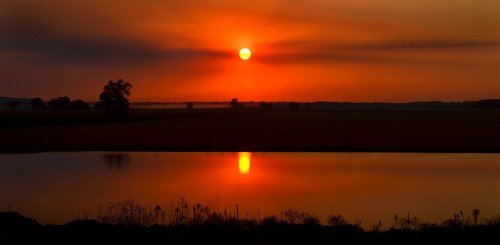 This post is about chasing the sun and the evolution of a photograph. Friend Shari was in town from St. Louis, so I picked her up shortly before sunset at her Mother’s house where she had returned from playing bridge. I told her I was looking to shoot something quick and easy so I wouldn’t have to stay up late. I suggested we make a run out Bloomfield Road to take a look at Campster School. I knocked off several frames, but the light and angle wasn’t right, so we headed out Bloomfield road where I did my normal grousing about the city’s “improvements” to the historic scenic highway.
This post is about chasing the sun and the evolution of a photograph. Friend Shari was in town from St. Louis, so I picked her up shortly before sunset at her Mother’s house where she had returned from playing bridge. I told her I was looking to shoot something quick and easy so I wouldn’t have to stay up late. I suggested we make a run out Bloomfield Road to take a look at Campster School. I knocked off several frames, but the light and angle wasn’t right, so we headed out Bloomfield road where I did my normal grousing about the city’s “improvements” to the historic scenic highway.
We headed south on 74 where I could see several big clouds of dust coming from fields, but none of them lined up right with the setting sun. When we crossed the Diversion Channel, though, I whipped off to the right onto the levee approach to knock off this picture of the reflection on a borrow pit without even checking the camera. For the geeks, I’ll provide camera settings: ISO 200 1/400 @ f/10 at 55mm and -1.67 eV.
THAT’S really how red the sky was due to all the dust and smoke in the air. I didn’t add any saturation or filters to get that. I was using a polarizing filter, but it didn’t come into play with the sun at that angle. (Click on the photos to make them larger.)
Maybe lighter would be better
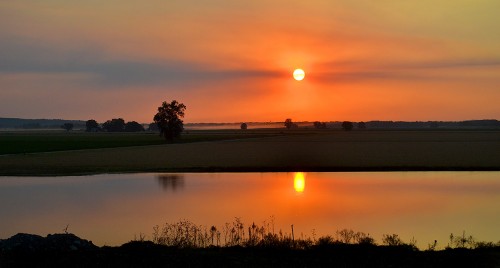 That wasn’t a bad start, but I wondered what would happen if I gave the scene a bit more light. I changed the exposure to ISO 200 1/200 @f/7/1 at 55mm and -.67 eV.
That wasn’t a bad start, but I wondered what would happen if I gave the scene a bit more light. I changed the exposure to ISO 200 1/200 @f/7/1 at 55mm and -.67 eV.
That let me see into the shadows of the fields and made the dust show up. It still wasn’t quite what I wanted. That’s where I noticed that my 55mm to 200mm zoom lens was at its most wide angle setting.
Forget the reflection
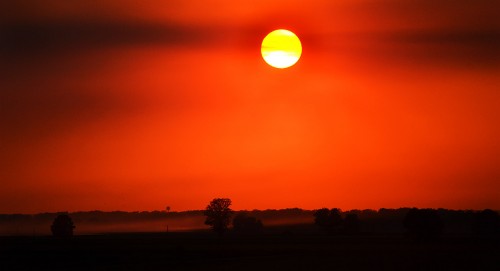 Maybe I should forget the water and reflection and try to bring up the sun and dust more. I changed my settings to ISO 200 1/800 @f/5.6 at 200mm (maximum zoom) and -.67 eV.
Maybe I should forget the water and reflection and try to bring up the sun and dust more. I changed my settings to ISO 200 1/800 @f/5.6 at 200mm (maximum zoom) and -.67 eV.
If I had diddled with the frame in Photoshop, I could have brought out more detail, but I wanted to leave it pretty close to straight for comparison purposes.
Let’s keep going
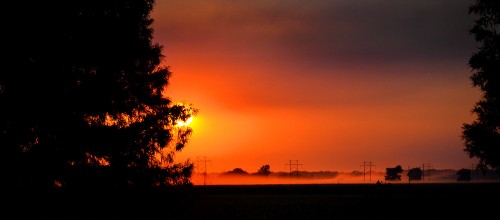 “OK,” I told Shari. “I can go to bed early tonight, but I think there’s a better shot down the road.”
“OK,” I told Shari. “I can go to bed early tonight, but I think there’s a better shot down the road.”
The dust started getting closer and the sun started getting lower and lower, but I couldn’t find any good places to pull off, plus I had traffic on my tail. Suddenly, a driveway appeared and I whipped in, throwing up my own cloud of dust. It was a long driveway, with a father playing with his kids about 100 yards away.
“I really need to be about where they are, but explaining what I’m doing is going to take longer than that sun is going to last. I’ll see if this angle works.”
It didn’t. ISO 200 1/400@f/5 at 120mm and -.67 eV.
Tractor in the field
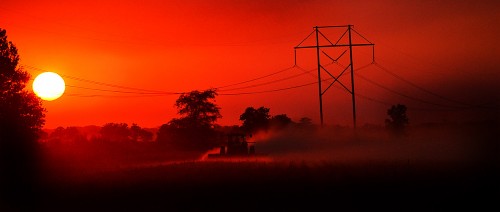 I spotted the source of the dust about halfway between Blomeyer and Delta: it was a piece of farm machinery working in the field, but I couldn’t find a place to turn off to get the sun behind it. Then, with traffic too close to turn, I spotted a road. I went several hundred yards down the road, turned into a driveway and waited for northbound traffic to get by so I could back out. “We’re on a straight stretch here, so we not only have to worry about southbound traffic, but we have to worry about impatient PASSING southbound traffic, so keep a sharp lookout on your side,” I warned Shari.
I spotted the source of the dust about halfway between Blomeyer and Delta: it was a piece of farm machinery working in the field, but I couldn’t find a place to turn off to get the sun behind it. Then, with traffic too close to turn, I spotted a road. I went several hundred yards down the road, turned into a driveway and waited for northbound traffic to get by so I could back out. “We’re on a straight stretch here, so we not only have to worry about southbound traffic, but we have to worry about impatient PASSING southbound traffic, so keep a sharp lookout on your side,” I warned Shari.
I was afraid we might be too late. I told Shari that I had missed a photo by no more than 10 seconds the other night. It was a sunset just like this one, and it was setting the roadside weeds on fire. I had time to get off one frame. The exposure was off by about two stops, but by the time I changed the setting and put the camera back to my eye, the sun had dropped just enough to let the magic leak out.
Looks like we made it to the right place. ISO 200 1/500@f/5.6 at 150mm and -.67 eV
He’s coming our way
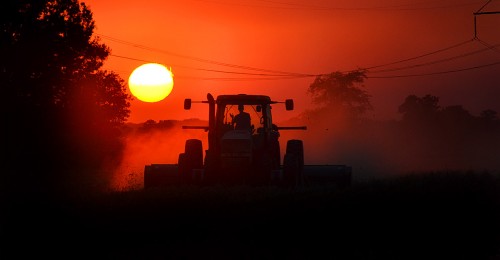 It became apparent that the farmer was headed our way. When I zoomed in on him, I saw him waving his arms around. I didn’t know if he was telling us to leave (Florida farmers aren’t particularly happy to see photographers because of all the migrant farmworker abuse stories we’ve done since the 1960s), bopping to music in the cab or what.
It became apparent that the farmer was headed our way. When I zoomed in on him, I saw him waving his arms around. I didn’t know if he was telling us to leave (Florida farmers aren’t particularly happy to see photographers because of all the migrant farmworker abuse stories we’ve done since the 1960s), bopping to music in the cab or what.
I was pretty sure if he kept coming, the sun would wind up almost exactly behind him. ISO 200 1/250@f/6.3 at 200mm and -.67 eV
The last frame
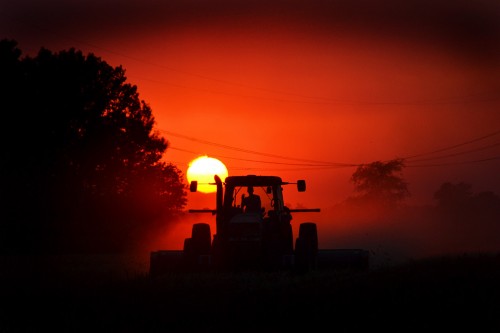 The sun didn’t exactly go where I thought it would, but it was close enough. I can’t decide if I like this shot or the one before it better. Both could be improved by some minor croping and playing with the tones. Still, this gives you a good idea of why you have to shoot it when you see it. And why you shouldn’t be satisfied with what you think is a good shot if there’s a possibility of finding a better one.
The sun didn’t exactly go where I thought it would, but it was close enough. I can’t decide if I like this shot or the one before it better. Both could be improved by some minor croping and playing with the tones. Still, this gives you a good idea of why you have to shoot it when you see it. And why you shouldn’t be satisfied with what you think is a good shot if there’s a possibility of finding a better one.
ISO 200 1/250@f/6.3 at 200mm and .67 eV (Note that I went from a minus exposure compensation to a positive one.)
Why was the farmer waving his arms?
Oh, what was the farmer doing with his arms? When the big machine got close to the edge of the field, I hopped out and walked to the end of the row. Instead of a gray-haired farmer, a young Matt Brucker, shut it off and walked up with a big smile. “I figured you were taking pictures when I saw you come down the road and stop,” he said.
“I saw you waving,” I said as I handed him a business card. “You might find yourself here in the morning.” He looked at it and said, “I think I’ve been on that site before.”
I hope he sees himself. He made for an early night for me.
Embarrassing admission: Dad used to rant and rave whenever he read a story where some knucklehead reporter didn’t know the right name for construction equipment. I’m that knucklehead when it comes to farming and farm equipment. The sun was down too low for me to get a good look at what Matt was operating. I don’t think it was a combine because the corn looked like it had already been cut. On the other hand, I couldn’t tell if he was pulling a plow to turn the stalks under.
I’m sure somebody will set me straight. I leave gardening stuff to Wife Lila and her WatchMyFoodGrow blog.

